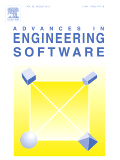
ADVANCES IN ENGINEERING SOFTWARE
Scope & Guideline
Pioneering Research at the Intersection of Engineering and Software.
Introduction
Aims and Scopes
- Software Development for Engineering Applications:
The journal emphasizes the development of software tools and frameworks that support various engineering disciplines, including structural, mechanical, and civil engineering. - Computational Methods and Optimization:
A core area of focus involves computational methods, particularly optimization techniques in engineering design, structural analysis, and material performance. - Integration of Machine Learning and AI:
There is a strong emphasis on the application of machine learning and artificial intelligence to enhance engineering processes, predictive modeling, and data analysis. - Simulation and Modeling Techniques:
The journal covers advancements in simulation methodologies, including finite element analysis, computational fluid dynamics, and other numerical approaches for solving complex engineering problems. - Interdisciplinary Approaches:
The journal promotes interdisciplinary research that combines engineering with fields such as computer science, material science, and environmental science to address complex challenges. - Real-world Engineering Applications:
Papers often highlight practical engineering applications, demonstrating how innovative software solutions can be applied in real-world scenarios to improve efficiency and effectiveness.
Trending and Emerging
- Machine Learning and Data-Driven Approaches:
Recent publications reflect a growing trend towards integrating machine learning techniques into engineering applications, enhancing predictive capabilities and optimizing designs based on data analysis. - Digital Twins and Simulation Frameworks:
The concept of digital twins is gaining traction, with research focusing on creating virtual replicas of physical systems for real-time monitoring and simulation, allowing for more effective design and maintenance. - Advanced Optimization Techniques:
There is an increasing focus on sophisticated optimization algorithms, including metaheuristic and hybrid approaches, which are being applied to complex engineering problems. - Multi-Disciplinary Design Optimization (MDO):
Emerging works highlight the importance of MDO, emphasizing collaborative and integrative strategies that combine various engineering disciplines to optimize designs comprehensively. - Sustainability and Green Engineering:
A notable trend is the emphasis on sustainable practices and green engineering solutions, reflecting the global push towards environmentally friendly designs and materials. - Real-Time and Adaptive Systems:
Research is increasingly focusing on real-time systems and adaptive algorithms that respond dynamically to changing conditions in engineering applications, enhancing performance and reliability.
Declining or Waning
- Traditional Numerical Methods:
There has been a noticeable decrease in the publication of papers focused solely on traditional numerical methods, such as basic finite element methods or classical computational techniques, as more advanced and hybrid approaches gain traction. - Static Structural Analysis:
Research centered around static analysis methods is becoming less common, with a shift towards dynamic and time-dependent analyses that consider real-world conditions more effectively. - Basic Software Development Tools:
The focus on basic software development tools and libraries has diminished, as researchers now favor more complex, integrated solutions that combine multiple functionalities and advanced algorithms. - Conventional Material Modeling Techniques:
There is a decline in studies that utilize conventional material modeling approaches, with an increasing preference for innovative materials and multi-scale modeling techniques.
Similar Journals
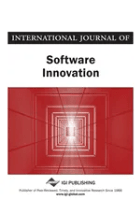
International Journal of Software Innovation
Driving Change Through Software Research and Collaboration.The International Journal of Software Innovation, published by IGI Global, serves as a crucial platform for disseminating cutting-edge research in the field of software engineering and innovation. With its ISSN 2166-7160 and E-ISSN 2166-7179, this journal has a broad scope that encompasses multiple areas of computer science, including Artificial Intelligence, Computer Graphics and Computer-Aided Design, Computer Networks and Communications, Software, and Computer Science Applications. Since its inception in 2017 and continuing until 2024, the journal has established itself in Q4 quartiles across various categories, reflecting both emerging trends and foundational principles in software innovation. Although it does not currently follow an Open Access model, its findings are vital for researchers, professionals, and students aiming to understand and contribute to the evolving landscape of software technologies. Located in the United States at 701 E Chocolate Ave, Ste 200, Hershey, PA 17033-1240, this journal not only offers research insight but also encourages collaboration and knowledge sharing among scholars worldwide.

Journal of Computer Languages
Advancing the Future of Computer LanguagesJournal of Computer Languages, published by ELSEVIER SCI LTD in the United Kingdom, serves as a crucial platform for advancing research and discussion in the fields of computer networks, human-computer interaction, and software development. With an ISSN of 2590-1184 and E-ISSN 2665-9182, this journal has established itself as a prominent resource within its category, achieving Q3 rankings in 2023 across its respective domains. As part of Scopus' indexed journals, it stands at impressive ranks of #152/395 in Computer Networks and Communications, #172/407 in Software, and #76/145 in Human-Computer Interaction, reflecting its relevance and contribution to the scholarly community. Operating under an open access model, the journal emphasizes accessibility and collaboration among researchers, professionals, and students keen on exploring innovative applications and advancements in computer languages. With a publication span extending from 2019 to 2024, the year-to-year growth reinforces its commitment to impacting both academia and industry significantly. Engage with cutting-edge research and foster your understanding in computer languages through this essential publication.

International Journal on Software Tools for Technology Transfer
Innovating the Future of Software Tools in Technology TransferInternational Journal on Software Tools for Technology Transfer (ISSN: 1433-2779; E-ISSN: 1433-2787), published by SPRINGER HEIDELBERG, stands as a pivotal platform for advancing the intersection of software engineering and technology transfer. Operating out of Germany, this esteemed journal has contributed significantly to the field since its inception in 1997 and continues to disseminate cutting-edge research through 2024. With a current impact footprint reflected in its Q2 status in Information Systems and Q3 in Software categories, it holds an impressive Scopus rank in the top 60th and 52nd percentiles respectively. Researchers, professionals, and students alike will find its commitment to exploring innovative software tools and techniques essential for enhancing technology transfer processes invaluable. Although the journal does not offer open access, its rigorously peer-reviewed articles are crucial for those seeking high-quality research insights.
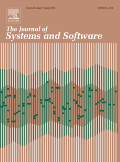
JOURNAL OF SYSTEMS AND SOFTWARE
Leading Insights in Systems and Software Research.JOURNAL OF SYSTEMS AND SOFTWARE, published by Elsevier Science Inc, is a premier academic journal that serves as a vital platform for the dissemination of cutting-edge research in the fields of software engineering, information systems, and hardware architecture. With an impressive impact factor and consistently ranking in the Q1 category across several relevant sectors, including hardware and architecture (ranked 33rd out of 177), information systems (ranked 72nd out of 394), and software (ranked 75th out of 407) as of 2023, this journal is recognized for its rigorous peer-review process and high-quality publications. Established in 1979, the journal has become an essential resource for researchers, professionals, and students looking to stay abreast of the latest advancements and emerging trends in systems and software. While the journal does not currently operate under an open-access model, it ensures wide visibility through its indexed publications and is dedicated to advancing scholarly discourse in computer science. With contributions from leading experts in the field, JOURNAL OF SYSTEMS AND SOFTWARE continues to shape the landscape of software and systems research.

Innovations in Systems and Software Engineering
Advancing the Future of Software EngineeringInnovations in Systems and Software Engineering, published by Springer London Ltd, is a highly relevant journal dedicated to advancing the field of software engineering and systems innovation. With an ISSN of 1614-5046 and E-ISSN 1614-5054, this journal serves as a key platform for researchers and practitioners to share their insights, cutting-edge research, and developments from 2005 to 2024. Positioned in the Q3 category for software within the 2023 metrics and ranked #219 out of 407 in Scopus, the journal highlights its commitment to addressing the evolving challenges and opportunities in software systems. Although not open access, it maintains a rigorous peer-review process to ensure the dissemination of quality research. As the field continues to grow in complexity, Innovations in Systems and Software Engineering is vital for fostering collaboration and innovation among professionals, students, and researchers aiming to shape the future of software engineering.
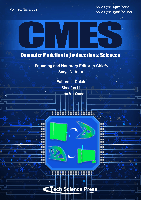
CMES-COMPUTER MODELING IN ENGINEERING & SCIENCES
Bridging Theory and Practice in Engineering SciencesCMES-COMPUTER MODELING IN ENGINEERING & SCIENCES is a premier journal published by Tech Science Press, dedicated to advancing knowledge in the fields of computer science applications, modeling and simulation, and software engineering. With an impressive convergence of research from 2000 to 2024, this journal stands out as a vital resource for researchers, professionals, and students alike, fostering innovation and collaboration in computational methodologies. The journal currently holds a Q3 category ranking in multiple disciplines according to the latest metrics, including Scopus, which reflects its growing significance in the academic community. By providing a platform for high-quality research and open discourse, CMES aims to enhance the understanding of complex systems through effective modeling techniques and computational tools. Despite its current classification under open access, the journal remains a cornerstone for those looking to deepen their expertise in cutting-edge computational engineering and science.
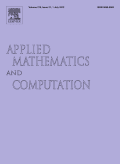
APPLIED MATHEMATICS AND COMPUTATION
Advancing the Frontiers of Mathematical InnovationApplied Mathematics and Computation is a premier journal dedicated to the dissemination of high-quality research in the field of applied mathematics and computational methods. Published by Elsevier Science Inc, this influential journal has established itself as a key resource for researchers, professionals, and students interested in mathematical modeling, numerical analysis, computational algorithms, and their applications across various disciplines. With an impressive impact factor reflecting its scholarly credibility, it holds a distinguished position in the Q1 quartile for both applied and computational mathematics as of 2023, ranking #31/635 and #12/189 in Scopus categories respectively, thereby indicating its significant impact on the academic community. The journal encompasses a broad spectrum of topics, encouraging original research, critical reviews, and innovative methodologies that address real-world challenges. Although it currently does not offer open access options, it remains a cornerstone publication for those at the forefront of mathematical research, continuously bridging theory with practical computation since its inception in 1975.

PROGRAMMING AND COMPUTER SOFTWARE
Elevating the Standards of Programming Knowledge Since 1978PROGRAMMING AND COMPUTER SOFTWARE is a distinguished journal committed to advancing the field of software development and programming methodologies. Published by PLEIADES PUBLISHING INC, this journal has been a valuable resource since its inception in 1978, reaching out to researchers, professionals, and students alike. With an emphasis on rigorous peer-reviewed articles, the journal holds a Q3 ranking in the realm of Software according to the latest 2023 Category Quartiles. Though it does not offer open access, the journal ensures that high-quality research is disseminated to its audience, providing insights into evolving programming techniques, software engineering challenges, and innovative solutions. With its convergence of years extending to 2024, PROGRAMMING AND COMPUTER SOFTWARE remains a pivotal publication, fostering a deeper understanding of the complexities in computer programming while supporting the broader software community.

Automated Software Engineering
Pioneering Research for Tomorrow's Software ChallengesAutomated Software Engineering is a premier journal dedicated to advancing the field of software engineering through the exploration of innovative methodologies, tools, and applications. Published by Springer since its inception in 1994, this journal has established itself as a vital resource for researchers, industry professionals, and students alike, providing insights into the latest trends and technological advancements. With an impressive impact factor and currently ranked in the Q2 quartile of the Software category, it is recognized for its contribution to the discipline. The journal covers a broad scope of topics including automation in software development, empirical studies, and theoretical advancements, fostering discussions that bridge academia and industry. As we look forward to converging towards the year 2024, the journal continues to invite high-quality submissions that challenge existing paradigms and pave the way for future innovations in software engineering.
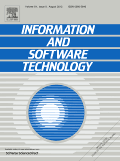
INFORMATION AND SOFTWARE TECHNOLOGY
Leading the Way in Software and Information Technology InsightsINFORMATION AND SOFTWARE TECHNOLOGY, published by Elsevier, is a leading journal that stands at the forefront of the fields of software engineering, information systems, and computer science applications. Since its inception in 1970 and with a focus extending to 2025, this esteemed publication has made significant contributions to the discourse on technological advancements and innovations. In 2023, it has achieved a remarkable Q1 categorization across multiple domains, including Computer Science Applications, Information Systems, and Software, reflecting its excellence and relevance in the academic community. With Scopus rankings that place it in the top percentiles in its categories (85th, 83rd, and 83rd respectively), the journal serves as an essential platform for researchers, professionals, and students eager to disseminate and engage with cutting-edge research and developments. While it does not currently offer Open Access options, the knowledge curated within its pages remains invaluable for advancing the fields of information technology and software development.